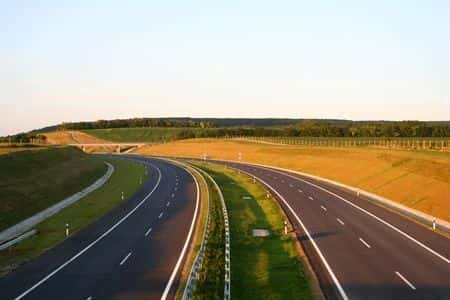Highway safety expert witness advises on claims that median barrier would have prevented fatal highway crash
Updated on
An expert witness on roadside safety, highway design and construction advises on mother’s claims that a median barrier for safety would have prevented the highway crash that killed her husband and daughter. The family was traveling along a highway with posted speeds of 75 mph. A woman driving the opposite direction was forced onto the shoulder by a tractor trailer that pulled into her lane. The truck did not hit the woman, but when she attempted to return to the highway, she lost control of her vehicle. She crossed the median and struck the family head-on, killing the father and daughter and seriously injuring the mother.
The mother sued the state alleging it was negligent in not placing a median barrier on that section of the highway, which was built in the 1960s.
Question(s) For Expert Witness
1. What standards apply to his interstate?
2. Did the state violate these standards?
Expert Witness Response
 The two American Association of State Highway and Transportation Officials (AASHTO) Roadside Design Guides (RDG) are well-known transportation engineering standards applicable to the subject portion of the interstate. Chapter Six in both RDG's deals with median barriers and contains guidance regarding when median barriers should be considered or provided.
The two American Association of State Highway and Transportation Officials (AASHTO) Roadside Design Guides (RDG) are well-known transportation engineering standards applicable to the subject portion of the interstate. Chapter Six in both RDG's deals with median barriers and contains guidance regarding when median barriers should be considered or provided.
 Generally speaking, there are two kinds of median barrier warrants: volume/width warrants and accident warrants. The state Department of Transportation previously determined that the volume/width warrant could no longer be applied in the state because it did not adequately protect the public. The volume/width warrant generally does not recommend a barrier for freeway medians as wide as 80-feet. However, under AASHTO's accident warrant, median barriers can and should be installed when, in the exercise of engineering study or engineering judgment, there have been an unacceptable number of median crossover crashes. Consequently, the DOT decided to install median barriers on most urban freeways, based on an adverse history of crossover collisions in the area. Based on an average crossover rate of 0.012 crashes per mile, the DOT correctly installed median barriers on almost all area freeways. The crossover crash rate for the 7-mile stretch of highway at issue in this case, was 0.349 crossover crashes per mile, which is 29 times higher than the accident warrant rate the DOT applied.
Generally speaking, there are two kinds of median barrier warrants: volume/width warrants and accident warrants. The state Department of Transportation previously determined that the volume/width warrant could no longer be applied in the state because it did not adequately protect the public. The volume/width warrant generally does not recommend a barrier for freeway medians as wide as 80-feet. However, under AASHTO's accident warrant, median barriers can and should be installed when, in the exercise of engineering study or engineering judgment, there have been an unacceptable number of median crossover crashes. Consequently, the DOT decided to install median barriers on most urban freeways, based on an adverse history of crossover collisions in the area. Based on an average crossover rate of 0.012 crashes per mile, the DOT correctly installed median barriers on almost all area freeways. The crossover crash rate for the 7-mile stretch of highway at issue in this case, was 0.349 crossover crashes per mile, which is 29 times higher than the accident warrant rate the DOT applied.
 Sound transportation engineering judgment, including the DOT's own standard for installing median barriers, due to adverse histories of crossover crashes, required it to provide a median barrier at and near the subject location prior to the accident. The DOT, by failing to provide a median barrier at the subject location, failed to comply with generally accepted highway engineering standards and failed to take reasonably necessary steps to protect the public.
Sound transportation engineering judgment, including the DOT's own standard for installing median barriers, due to adverse histories of crossover crashes, required it to provide a median barrier at and near the subject location prior to the accident. The DOT, by failing to provide a median barrier at the subject location, failed to comply with generally accepted highway engineering standards and failed to take reasonably necessary steps to protect the public.
 The expert is a professional engineer with more than 25 years of traffic engineering experience. He has conducted safety research and is an engineering professor familiar with AASHTO standards.
The expert is a professional engineer with more than 25 years of traffic engineering experience. He has conducted safety research and is an engineering professor familiar with AASHTO standards.
About the author
Kristin Casler
Kristin Casler is a seasoned legal writer and journalist with an extensive background in litigation news coverage. For 17 years, she served as the editor for LexisNexis Mealey’s litigation news monitor, a role that positioned her at the forefront of reporting on pivotal legal developments. Her expertise includes covering cases related to the Supreme Court's expert admissibility ruling in Daubert v. Merrell Dow Pharmaceuticals Inc., a critical area in both civil and criminal litigation concerning the challenges of 'junk science' testimony.
Kristin's work primarily involves reporting on a diverse range of legal subjects, with particular emphasis on cases in asbestos litigation, insurance, personal injury, antitrust, mortgage lending, and testimony issues in conviction cases. Her contributions as a journalist have been instrumental in providing in-depth, informed analysis on the evolving landscape of these complex legal areas. Her ability to dissect and communicate intricate legal proceedings and rulings makes her a valuable resource in the legal journalism field.
Subscribe to our newsletter
Join our newsletter to stay up to date on legal news, insights and product updates from Expert Institute.
Sign up nowFind an expert witness near you
What State is your case in?
Subscribe to our newsletter
Join our newsletter to stay up to date on legal news, insights and product updates from Expert Institute.



